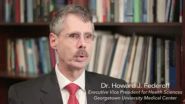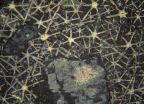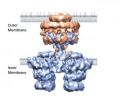(Press-News.org) Scientists at the University of East Anglia have identified four new man-made gases in the atmosphere – all of which are contributing to the destruction of the ozone layer.
New research published today in the journal Nature Geoscience reveals that more than 74,000 tonnes of three new chlorofluorocarbons (CFCs) and one new hydrochlorofluorocarbon (HCFC) have been released into the atmosphere.
Scientists made the discovery by comparing today's air samples with air trapped in polar firn snow – which provides a century-old natural archive of the atmosphere. They also looked at air collected between 1978 and 2012 in unpolluted Tasmania.
Measurements show that all four new gases have been released into the atmosphere recently – and that two are significantly accumulating. Emission increases of this scale have not been seen for any other CFCs since controls were introduced during the 1990s. But they are nowhere near peak CFC emissions of the 1980s which reached around a million tonnes a year.
Lead researcher Dr Johannes Laube from UEA's School of Environmental Sciences said: "Our research has shown four gases that were not around in the atmosphere at all until the 1960s which suggests they are man-made."
"CFCs are the main cause of the hole in the ozone layer over Antarctica. Laws to reduce and phase out CFCs came into force in 1989, followed by a total ban in 2010. This has resulted in successfully reducing the production of many of these compounds on a global scale. However, legislation loopholes still allow some usage for exempted purposes.
"The identification of these four new gases is very worrying as they will contribute to the destruction of the ozone layer. We don't know where the new gases are being emitted from and this should be investigated. Possible sources include feedstock chemicals for insecticide production and solvents for cleaning electronic components.
"What's more, the three CFCs are being destroyed very slowly in the atmosphere – so even if emissions were to stop immediately, they will still be around for many decades to come," he added.
INFORMATION:
This research has been funded by the Natural Environment Research Council (NERC), the National Centre for Atmospheric Science (NCAS), the European Union, and the Commonwealth Scientific and Industrial Research Organisation (CSIRO).
'Newly detected ozone depleting substances in the atmosphere' is published in the journal Nature Geoscience on Sunday, March 9, 2014.
UEA research reveals 4 new man-made gases in the atmosphere
2014-03-09
ELSE PRESS RELEASES FROM THIS DATE:
Blood test identifies those at-risk for cognitive decline, Alzheimer's within 3 years
2014-03-09
VIDEO:
Howard J. Federoff, M.D., Ph.D., of Georgetown University Medical Center, explains a new blood test that can predict onset of MCI or Alzheimer's.
Click here for more information.
WASHINGTON — Researchers have discovered and validated a blood test that can predict with greater than 90 percent accuracy if a healthy person will develop mild cognitive impairment or Alzheimer's disease within three years.
Described in Nature Medicine published online today, the study heralds ...
Mutations in leukemia gene linked to new childhood growth disorder
2014-03-09
Mutations in a gene associated with leukaemia cause a newly described condition that affects growth and intellectual development in children, new research reports.
A study led by scientists at The Institute of Cancer Research, London, identified mutations in the DNA methyltransferase gene, DNMT3A, in 13 children.
All the children were taller than usual for their age, shared similar facial features and had intellectual disabilities. The mutations were not present in their parents, nor in 1,000 controls from the UK population.
The new condition has been called 'DNMT3A ...
First animals oxygenated the ocean, study suggests
2014-03-09
The evolution of the first animals may have oxygenated the earth's oceans – contrary to the traditional view that a rise in oxygen triggered their development.
New research led by the University of Exeter contests the long held belief that oxygenation of the atmosphere and oceans was a pre-requisite for the evolution of complex life forms.
The study, published today in the leading journal Nature Geoscience, builds on the recent work of scientists in Denmark who found that sponges – the first animals to evolve – require only small amounts of oxygen.
Professor Tim ...
In grasslands remade by humans, animals may protect biodiversity
2014-03-09
COLLEGE PARK, Maryland – A comparative study of grasslands on six continents suggests there may be a way to counteract the human-made overdose of fertilizer that threatens to permanently alter the biodiversity of the world's native prairies.
The solution is one that nature devised: let grazing animals crop the excess growth of fast growing grasses that can out-compete native plants in an over-fertilized world. And grazing works in a way that is also natural and simple. The herbivores, or grazing and browsing animals, feed on tall grasses that block sunlight from reaching ...
New bioinformatics tool to visualize transcriptomes
2014-03-09
ZENBU, a new, freely available bioinformatics tool developed at the RIKEN Center for Life Science Technology in Japan, enables researchers to quickly and easily integrate, visualize and compare large amounts of genomic information resulting from large-scale, next-generation sequencing experiments.
Next-generation sequencing has revolutionized functional genomics, with protocols such as RNA-seq, ChIP-seq and CAGE being used widely around the world. The power of these techniques lies in the fact that they enable the genome-wide discovery of transcripts and transcription ...
Sun's energy influences 1,000 years of natural climate variability in North Atlantic
2014-03-09
Changes in the sun's energy output may have led to marked natural climate change in Europe over the last 1000 years, according to researchers at Cardiff University.
Scientists studied seafloor sediments to determine how the temperature of the North Atlantic and its localised atmospheric circulation had altered. Warm surface waters flowing across the North Atlantic, an extension of the Gulf Stream, and warm westerly winds are responsible for the relatively mild climate of Europe, especially in winter. Slight changes in the transport of heat associated with these systems ...
Spread of antibiotic resistance understood by unravelling bacterial secretion system
2014-03-09
The system that allows the sharing of genetic material between bacteria – and therefore the spread of antibiotic resistance – has been uncovered by a team of scientists at Birkbeck, University of London and UCL.
The study, published today in Nature, reveals the mechanism of bacterial type IV secretion, which bacteria use to move substances across their cell wall. As type IV secretion can distribute genetic material between bacteria, notably antibiotic resistance genes, the mechanism is directly responsible for the spread of antibiotic resistance in hospital settings. ...
Atomically thin solar cells
2014-03-09
It does not get any thinner than this: The novel material graphene consists of only one atomic layer of carbon atoms and exhibits very special electronic properties. As it turns out, there are other materials too, which can open up intriguing new technological possibilities if they are arranged in just one or very few atomic layers. Researchers at the Vienna University of Technology have now succeeded for the first time in creating a diode made of tungsten diselenide. Experiments show that this material may be used to create ultrathin flexible solar cells. Even flexible ...
U of M-led study finds herbivores can offset loss of plant biodiversity in grassland
2014-03-09
Two wrongs may not make a right. But when it comes to grassland plant species diversity, it just might. Two impacts often controlled by humans — being fertilized and being eaten — can combine to the benefit of biodiversity, according to an innovative international study led by U of M researchers Elizabeth Borer and Eric Seabloom.
The findings, published March 9 in the online edition of Nature in advance of print publication, are important in a world where humans are changing both herbivore distribution and the supply of nutrients like nitrogen or phosphorus, and where ...
UNC researchers create new tool to unravel the mysteries of metastasis
2014-03-09
VIDEO:
When the drug analog of rapamycin binds to and activates the Src kinase, the cell reacts in real time, revealing Src's role in metastasis.
Click here for more information.
March 10, 2014
CHAPEL HILL, N.C. – Researchers at the UNC School of Medicine have devised a new biochemical technique that will allow them and other scientists to delve much deeper than ever before into the specific cellular circuitry that keeps us healthy or causes disease.
The method – developed ...






